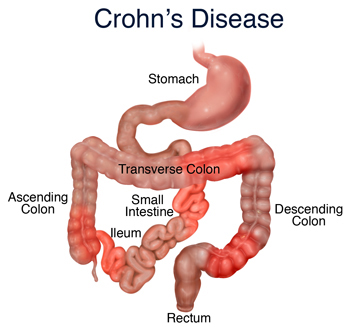Pentasa is used to treat both the small and large intestine. It is used for the induction of remission and also for treatment of patients with mild to moderate active ulcerative colitis. Unlike other drugs of its kind, each Pentasa microsphere is encased in a special coating, which allows 5-ASA (the active ingredient in Pentasa) to be delivered to the intestinal tract. As soon as Pentasa capsules reach the stomach they interact with water causing the microspheres to release, resulting in 5-ASA being released in a controlled manner throughout the intestinal tract.
Pentasa is administered in capsule form and allows for you to take less capsules per day. The recommended dosage of Pentasa is two 500 mg capsules or four 250mg capsules per day. It’s important that you take Pentasa exactly as directed by your physician. You can take Pentasa with or without food and should take it with a full glass of water. There is also a rectal form of Pentasa available. When taking the rectal form of Pentasa, you should attempt to empty your bowel beforehand. Also, be sure to shake the rectal suspension well before use and try to retain suspension overnight.
Pentasa is usually an effective and well-tolerated mesalamine therapy. Common side effects associated with Pentasa are diarrhea, headache, nausea, rash, bloody diarrhea and abdominal pain. It is essential that you talk to your doctor about any past or present medical conditions. Patients with impaired liver or kidney function should use caution when taking Pentasa. Patients with a hypersensitivity to mesalamine or salicylates should not take Pentasa. Patients who are pregnant should only take Pentasa if clearly needed upon the advice of a physician. Also, nursing mothers should use caution when excersing and taking Pentasa. The efficacy and safety of Pentasa has not been concluded in children.


